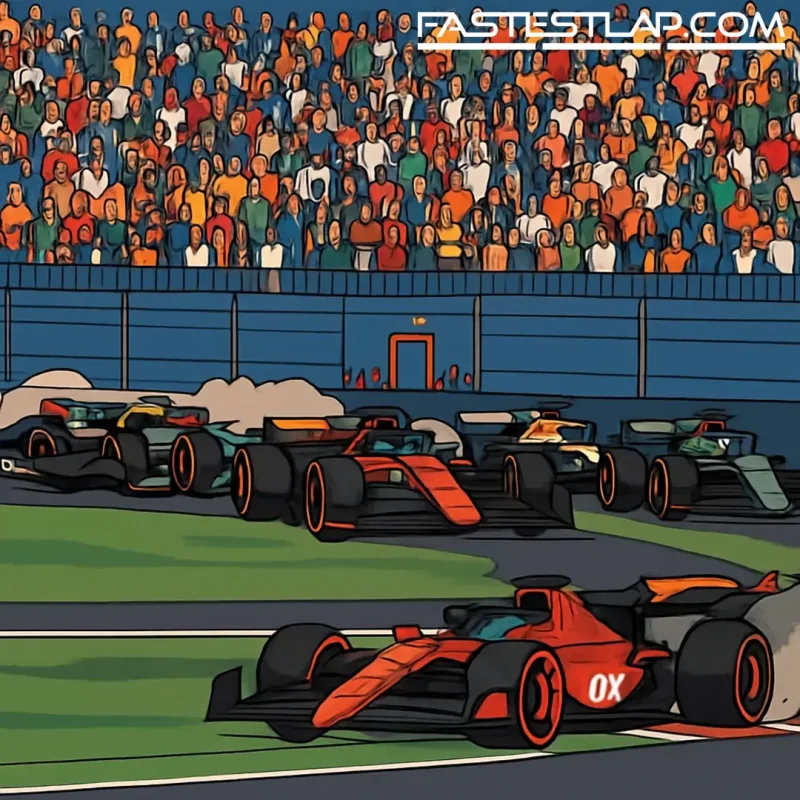George Russell wasn’t in the mood for nuance in Mexico City. After a bruising opening lap that saw multiple cars skitter across the grass at Turns 1–3, the Mercedes driver made clear he thought the stewards let too much slide.
“I just don’t get how three guys can cut the corner, keep their spots and it’s all fine,” Russell said post-race. “They braked too late, got it wrong, but there was no punishment for the mistake. I was pretty pissed off.”
The first chicane at the Autódromo Hermanos Rodríguez has always been a magnet for chaos — heavy braking, minimal grip, and plenty of green escape area tempting drivers into a straight-line bailout. On Sunday it was Charles Leclerc and Max Verstappen who went cross-country at the start. Both ceded positions when they could, and the stewards opted against formal penalties.
For Russell, that wasn’t enough. He argued the advantage gained — track position preserved in the mess of Lap 1 — had already shaped the race.
“If I come out of Turn 3 in P3, we finish P3. That’s the season in a nutshell,” he said, lamenting what might’ve been if the opening sequence had been policed differently. “The guys who stayed on the circuit did the right thing and came off worse.”
His frustration didn’t end there. A few laps later, Verstappen slipped wide again through Turn 4 before rejoining — another moment Russell believed should’ve drawn a sanction. “Wrong place, wrong time for me. But that should have been penalised as well.”
It’s not a new argument around Mexico’s first complex. The shallow-angle chicane funnels a 20-car field into space that narrows by the meter, with cars pinched, bounced and bubble-wrapped through the apexes. There’s a reason drivers often talk about it like a casino floor — stay left, stay right, stay lucky.
And there’s the design choice. Asphalt and grass sit beyond the curbs, inviting an easy reset for anyone who sails in too deep. Russell’s suggestion? Add jeopardy.
“It’s the circuit, ultimately. There’s a get-out-of-jail-free card there,” he told Sky F1. “If there was gravel, no one goes there. We’ve seen it almost every year we’ve been here… it’s like lawnmower racing.”
That “lawnmower” barb landed because it’s hard to argue with the pattern. The stewards tend to be lenient on Lap 1 incidents, particularly when drivers give back positions. But the spirit-versus-letter debate rears its head: if you can send it around the outside, miss the corner and simply rejoin without real consequence, is the deterrent strong enough? Russell clearly thinks not.
Mercedes didn’t have the speed to bully the issue on pace alone, which amplified the sting. “We didn’t have the pace today,” he said, “but track position at the start would’ve made all the difference.”
This wasn’t a rant about one rival, even if Verstappen’s name came up more than once. It was a broader call for consistency — and for Mexico’s first chicane to force commitment rather than offer shortcuts. Drivers took their risks; some made the corner, others didn’t. The ones who did, Russell argued, shouldn’t be the ones paying for it.
There’s a reasonable counterpoint: marshaling Lap 1 chaos is a dark art, and the give-back protocol has kept races moving without drowning the sport in penalties. But when half the field knows there’s a safe escape hatch with minimal consequence, the calculation changes.
The fix is straightforward in theory and messy in practice. Gravel would slam the door shut, but it also risks parking cars in live traffic. Reprofiling the apexes could tighten the line, but you’re still throwing 20 cars at one funnel. Even better sensors and stricter delta rules for drivers who shortcut? That keeps the deterrent without adding cranes to the equation.
However the FIA chooses to tackle it, expect this one to stay on the agenda. Mexico’s opener has become a seasonally scheduled headache; Sunday just poured salt on it. Russell left feeling he’d lost a podium at the first braking zone. And he isn’t alone in thinking the lawn needs a little less traffic.




